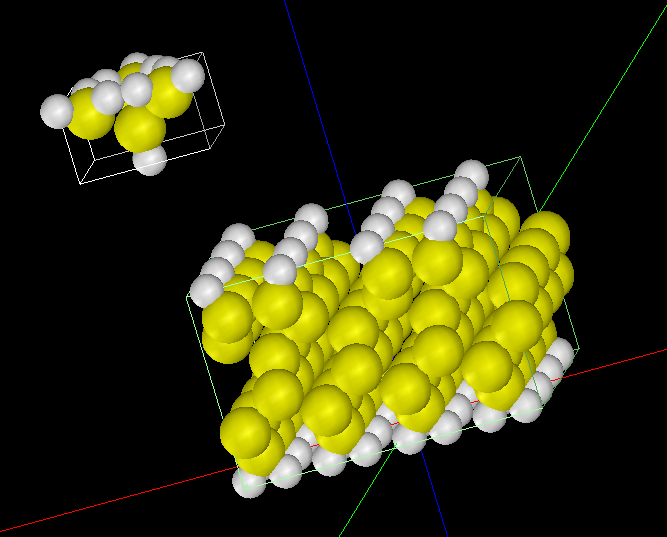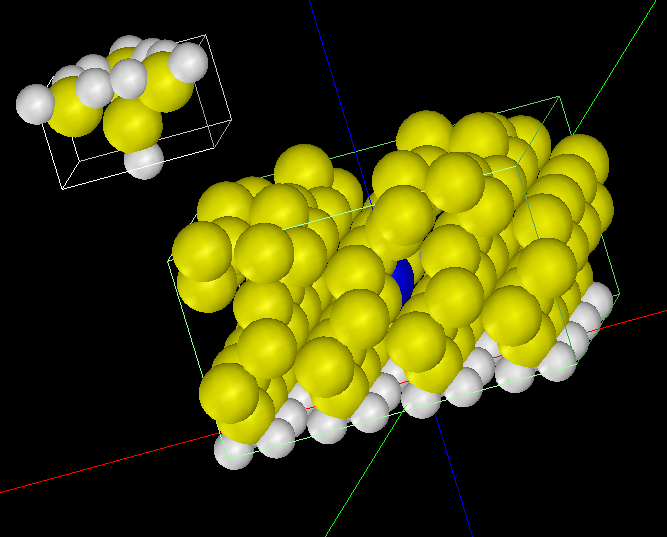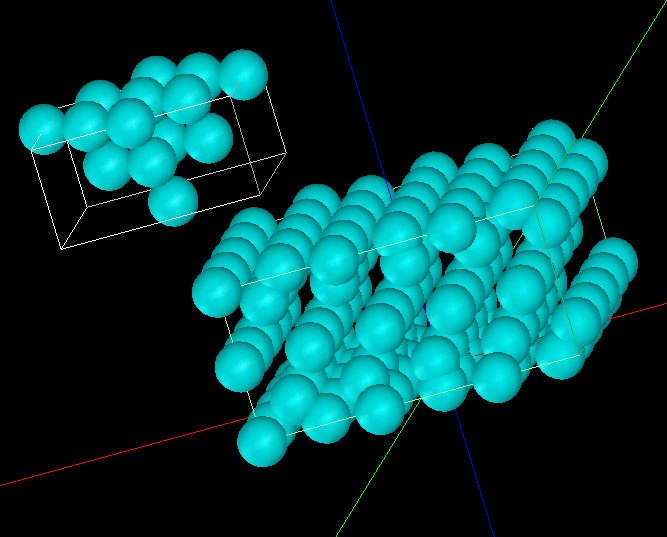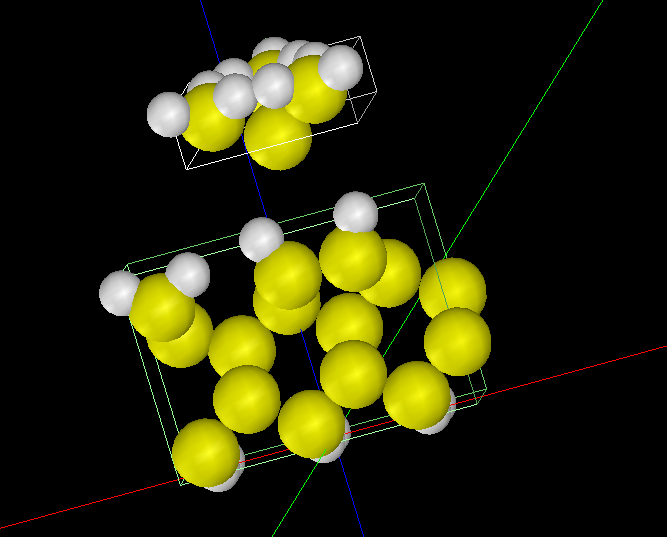Simulation is performed based on a quantum mechanical method on DFTB.
Density Functional based Tight Binding method is adopted.
So calculation time is greatly reduced in comparison with that of ab initio calculation.
It is possible to simulate
STM,
STS,
AFM, and
KPFM
for an organic compound upon an inorganic material surface or upon a metal substrate.
Kinds of chemical elements we can use as constituent elements of a tip and a sample is no less than 69 kinds described below, and almost all inorganic compounds and organic compounds can be used on simulation.
H, Li, Be, B, C, N, O, F, Na, Mg, Al, Si, P, S, Cl, K, Ca, Sc, Ti, V, Cr, Mn, Fe, Co, Ni, Cu, Zn, Ga, Ge, As, Se, Br, Rb, Sr, Y, Zr, Nb, Mo, Tc, Ru, Rh, Pd, Ag, Cd, In, Sn, Sb, Te, I, Cs, La, Ce, Ba, Gd, Tb, Dy, Ho, Er, Tm, Yb, W, Re, Ir, Pt, Au, Hg, Pb, Bi, U



